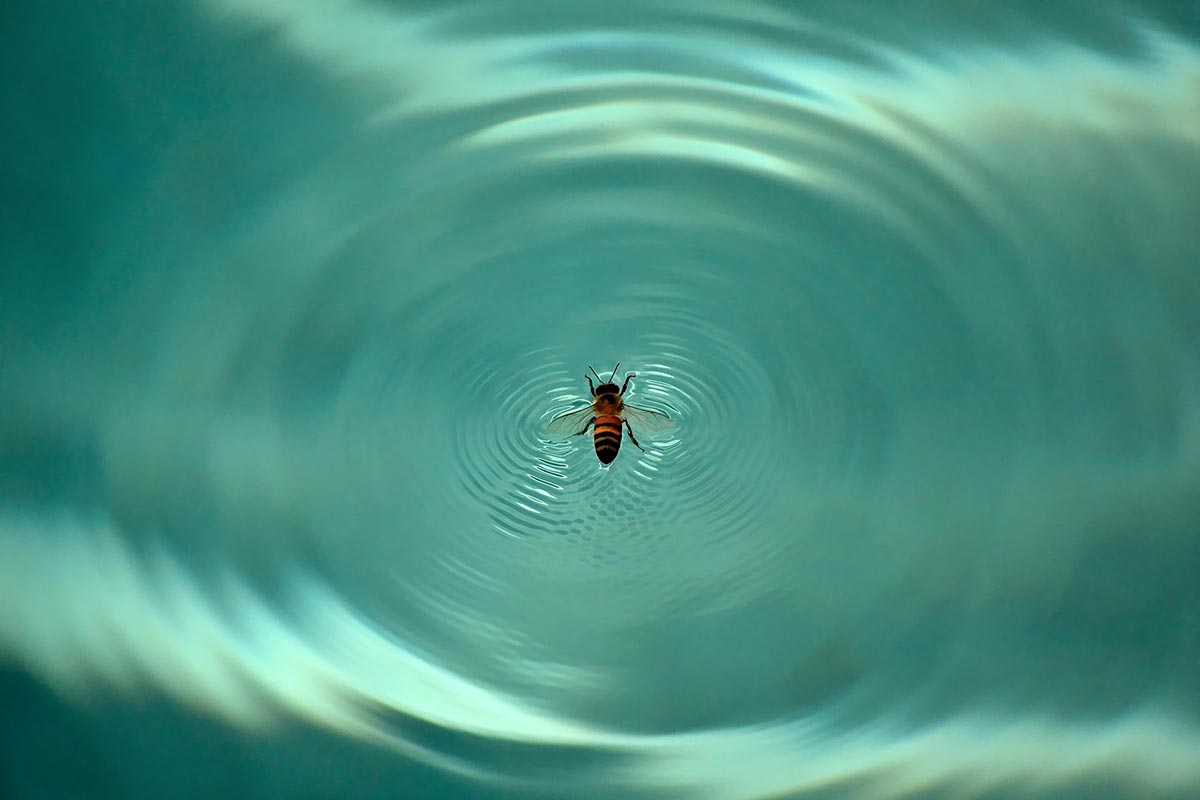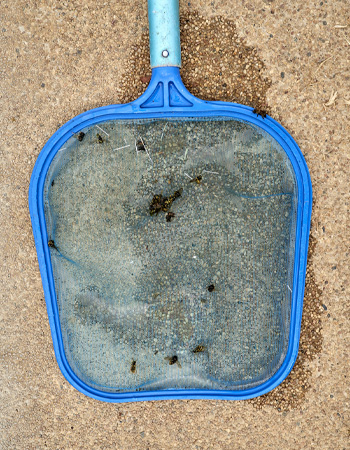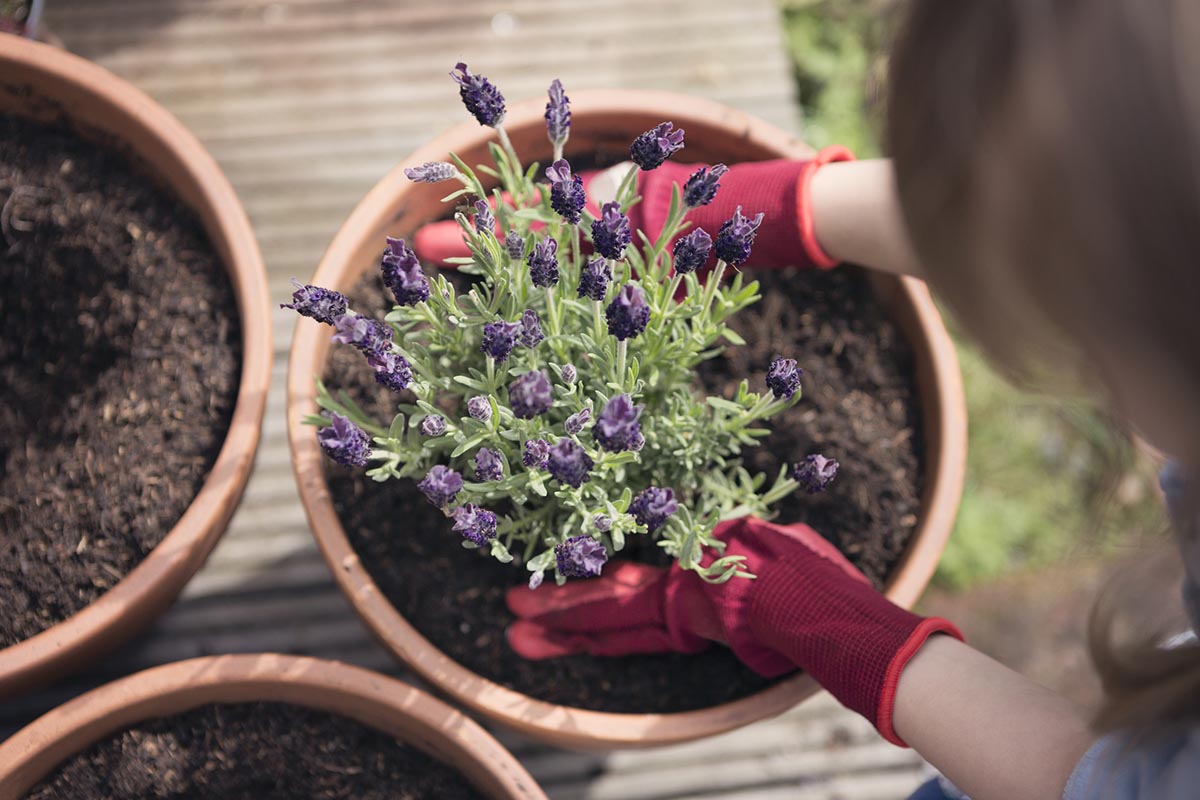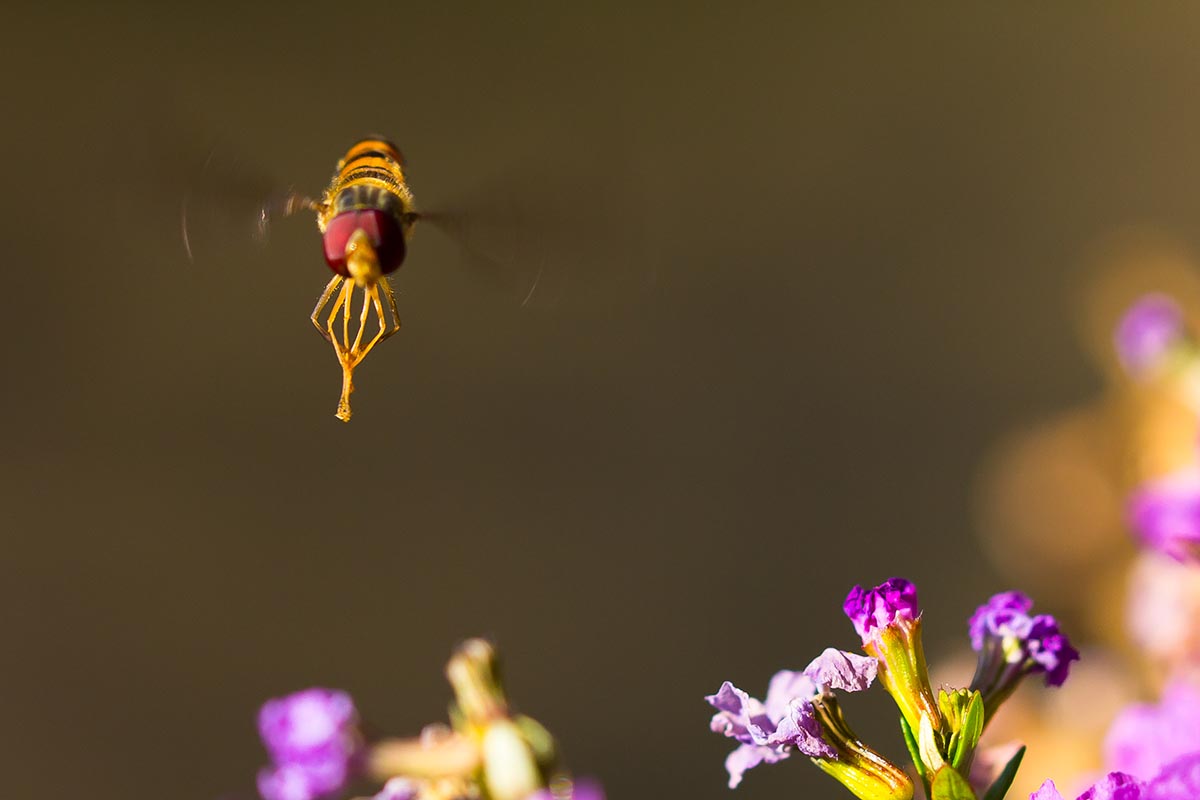

We may earn revenue from the products available on this page and participate in affiliate programs. Learn More ›
Project Overview
- Bees are important to the environment, so it’s important not to harm them when finding ways to keep them away from the pool.
- To stay safe from stinging insects like bees, avoid scooping them out of the pool with your hands, and use extra caution if you know you’re allergic.
- Some ways to keep bees away from the pool include removing food and drink from the pool area, relocating bee-friendly plants, avoiding brightly colored decor, repairing leaks, creating an alternative water source away from the pool, turning on or installing jets, and using natural deterrents like citronella.
- If you suspect you have a swarm on your property, a bee removal service can relocate the bees to a safe location.
When you’re ready to take a refreshing dip at the end of a long day, bees buzzing around the pool can be an unwelcome nuisance. While many homeowners recognize that bees are beneficial and a boon to their gardens, it’s understandable not to want stinging insects in areas meant for relaxation. So why do bees hang around pools in the first place? As for any living thing, bees need water to survive, and in hot weather, bees use water to cool their hives and thin their honey when necessary. When no other sources are available, they may seek out pools to access water.
Fortunately, there are a variety of methods for getting rid of bees without harming them. These include creating an alternative watering station, choosing less-appealing colors and flowers, and using bee deterrents. If bees truly aren’t getting the hint, you may need to have a bee removal service relocate the hive. Knowing how to keep bees away from a pool can protect the bee population, prevent you from getting stung, and make your pool experience much more enjoyable.
Time required: A few minutes to a few hours
Difficulty: Beginner
Tools & Materials
Bobvila.com may earn a commission from purchases made through these links.
- Spray bottle
- Pool skimmer
- Cups with lids
- Drink dispensers
- Chip clips
- Bird bath or shallow dish
- Marbles
Before You Begin…

Bees provide a valuable service with their pollination efforts. Therefore, it’s important not to kill them but rather deter them or remove them from the area. While homeowners can handle some methods for keeping bees away, there are some cases where it’s best to bring in a removal service.
Bees are often mistaken for other stinging insects—namely wasps and hornets. While they may seem similar, these insects all behave differently, meaning that methods for getting rid of them can vary. For this reason, you’ll want to ensure that it’s actually bees you have before proceeding with removal efforts. If other pests like wasps are the culprit, it’s wise to contact one of the best pest control companies (such as Orkin or Terminix) for removal. It can also help to know what types of bees you’re dealing with so you can safely deter or remove them.
Tips and Safety Considerations
- Keep sweet treats away from the pool area or clean up any drips.
- Use natural bee repellents outdoors, such as essential oils, vinegar, cinnamon, or garlic.
- Draw bees away from the pool area by placing bee-friendly flowers and water sources in alternative locations.
- Use a pool skimmer instead of your hand to remove bees in the swimming pool as they may become agitated and sting.
- If you’re allergic to bees, avoid them.
- Leave handling bees and removing a swarm to the professionals.
1. Keep food and drinks in the pool area contained or covered with lids to avoid attracting bees.
If you’re trying to figure out how to get rid of bees around your pool, removing potential attractants is a great first step. Bees love sweet treats, so if you bring sweet drinks or treats like popsicles to the pool area, bees may take advantage. Allan Bossel, operations expert at BBE Bed Bug Exterminator in St. Petersburg, Florida, says, “Ensure that your pool area is free from any sugary drinks or food. Sweet smells also attract bees.”
If having food or treats by the pool is unavoidable, Bossel says to “keep food items in sealed containers when not in use, clean any spilled liquids quickly, and cover garbage cans, too.” Cups with lids, drink dispensers, and chip clips can be useful in keeping snacks contained and out of reach of bees.

2. Relocate bee-friendly plants or flowers surrounding the pool to another part of the yard.
Certain plants or flowers surrounding the pool can attract bees to the area and make a relaxing swim difficult. Bees are particularly drawn to colorful, fragrant flowers like lavender, sunflowers, zinnias, and cosmos. What’s more, once bees find a plentiful source of nectar and pollen, they share the location with the rest of the hive, which means more bees are soon to follow. Relocating these plants and flowers means they can still benefit bees while encouraging them to congregate elsewhere on the property.
To go a step further toward preventing bees and wasps around the pool, you can create an entire pollinator garden filled with bright colors and ample nectar a safe distance away from the pool to draw bees and wasps to it. This will prevent them from being tempted to hang around the pool.
3. Avoid using brightly colored furniture or decor near the pool.
Bees know that bright colors often lead them to nectar-rich flowers, so they are drawn to other brightly colored objects as well. These can include bright furniture, cushions, or decor. While you may want a festive pool environment, the bright colors can act as an invitation for bees to join the party.
Choosing neutral colors for outdoor furniture and decor may help repel bees naturally, or at the very least discourage them from hanging around for too long. But there are exceptions—bees have difficulty seeing certain colors and may perceive red as black. Other colors that can act as a potential deterrent for bees are pale greens, brown, and black. These colors don’t typically indicate the presence of a nectar-rich flower, so bees are more likely to ignore them.
4. Look for leaks around the pool and make repairs as needed since excess water can attract bees.
While the pool may tempt hot or thirsty bees, it can be difficult for bees to actually reach the water without falling in, in which case they’ll likely drown. That’s why bees are also attracted to smaller, shallower bodies of water. If the pool has a leak and there are small areas of excess water, bees may be attracted to them. Paying the pool repair cost to fix the leaks and keep the area drier can be a good bumble bee deterrent as well as discourage other types of bees and wasps from buzzing around the pool.
5. Create an alternative water source for bees to draw them away from the pool.
Creating a bee watering station may be the cutest way to keep bees from the swimming pool. Bee watering stations function as alternative water sources that are more accessible than pools so that bees won’t need to visit the pool at all. “Set up a bird bath or shallow dish with water at a distance from your pool that is reasonable,” Bossel says. “Bees have a place to land when tiny stones are placed atop marbles in the water.”
Some other ideas for a bee watering station include placing rocks in the bowl of a self-filling pet waterer, placing flower petals in a bird bath to attract bees, and adding marbles to a shallow dish filled with a small amount of water. You can make this as simple or elaborate as you want and may even be able to sneak a peek at a drinking bee.
6. Install or turn on jets in the pool to discourage bees.
Bees aren’t good swimmers and will typically seek out calm water when they need a drink or need to transport water back to the hive. You can use this weakness to your advantage and either install jets or use the jets you have to create movement in the water. This will act as a bee deterrent because bees may seek hydration in a place that doesn’t pose as much danger. While this is one of the pricier ways to deter bees if the pool doesn’t already have jets, it may be a welcome excuse if you’ve been considering adding this feature anyway.

7. Use natural bee deterrents like citronella and lemongrass plants or essential oils around the pool.
While some plants or scents attract bees, others act as deterrents. Certain essential oils, such as eucalyptus oil, citronella oil, and peppermint oil, are scents that bees don’t like. According to Bossel, “They will not come close to [the pool] if [essential oils] are used as sprays or dabbed onto cotton wools placed in different spots near your pool.” The downside, he notes, is that the scent will fade quickly and “will need to be refreshed daily.”
Other scents that can be used as bee repellents outdoors include vinegar, cinnamon, and garlic. You can make a spray of equal parts water and vinegar and spray it around the pool area. Another option is to sprinkle cinnamon around the area or crush up some garlic cloves and mix it with water to spray around the pool.
8. If you have a swarm of bees living near the pool, consider having a bee removal service relocate it.
Lots of bee activity around the pool may mean you have a swarm nearby that is searching for somewhere to start a new colony. There may also be an established hive nearby. Bees tend to keep to themselves and do not typically pose a threat to people or pets unless they are disturbed. However, if you are uncomfortable with a large swarm of bees on your property, one of the best bee removal services like Ehrlich or a local beekeeper can safely relocate them to a more appropriate spot. If you think the bees are carpenter bees and have taken up residence in your home or shed, you may want to use one of the best carpenter bee traps to remove them.
If you suspect you have another stinging pest like hornets or wasps, a professional pest control service is the best bet for removal. Wasp removal costs between $100 and $1,300 depending on the size of the infestation, the location of the nest, and the method used. If wasps really become a problem around the pool, you may even consider choosing one of the best wasp traps to set up in the yard.
